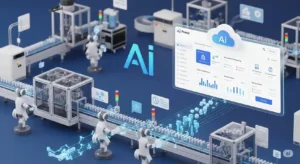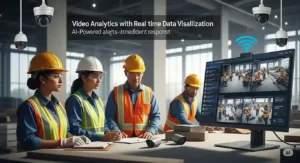Introduction
In an era where precision and efficiency are of utmost importance, manufacturers are turning to AI to revolutionize their quality inspection processes. AI-driven visual quality inspection has emerged as a game-changer, enabling companies to enhance both productivity and accuracy. Let’s delve deeper into this transformative technology.
Understanding Visual Quality Inspection
Visual quality inspection involves assessing products for defects, inconsistencies, or anomalies using images or videos. Human inspectors have traditionally performed this task, scrutinizing products meticulously. However, AI has now stepped in to augment and even replace human inspectors in some cases.
Challenges with Traditional Inspection Methods
Traditional quality inspection methods have several limitations. Human inspectors can become fatigued, leading to inconsistencies in their assessments. Moreover, the subjective nature of human judgment can result in varying interpretations of quality standards. These challenges can lead to increased production costs and delays.
The Role of AI in Visual Quality Inspection
AI, particularly machine learning and computer vision, plays a pivotal role in automating and improving the accuracy of visual quality inspection. AI systems can analyze thousands of images per second, identifying defects with remarkable precision. Machine learning algorithms can be trained to recognize even subtle defects, ensuring consistent quality control.
Benefits of AI-Powered Visual Quality Inspection
Enhanced Productivity
AI-powered systems work tirelessly, 24/7, without breaks or fatigue. This continuous operation significantly boosts productivity by reducing inspection time and increasing output.
Unparalleled Accuracy
AI eliminates the risk of human error, ensuring a higher level of accuracy in defect detection. This translates into reduced waste and rework.
Cost Savings
With fewer defects and increased efficiency, manufacturers can lower production costs and maintain competitive pricing.
Scalability
AI systems are easily scalable, making them suitable for both small-scale operations and large manufacturing facilities.
Applications Across Industries
AI-driven visual quality inspection isn’t limited to a single industry. It finds applications in automotive, electronics, pharmaceuticals, food production, and many others. Manufacturers in these sectors are harnessing the power of AI to maintain quality standards consistently.
Implementing AI-Driven Quality Inspection
To implement AI-driven quality inspection successfully, companies must consider various factors, including data security, training AI models, and integration with existing systems. These steps are crucial for a seamless transition.
Ensuring Data Security and Privacy
While AI brings substantial benefits, it also raises concerns about data security and privacy. Manufacturers must take measures to safeguard sensitive information and comply with relevant regulations.
Future Trends in AI Quality Inspection
As technology evolves, so do AI quality inspection methods. Future trends may include improved AI models, faster processing speeds, and enhanced compatibility with various manufacturing processes.
Cost Considerations
Implementing AI-powered inspection systems involves initial costs for hardware, software, and training. However, the long-term cost savings outweigh these initial investments.
Training AI Models
Training AI models requires access to high-quality labeled data. Companies may need to collaborate with data labeling services to ensure accurate model training.
Integration with Existing Systems
Seamless integration with existing production systems is crucial for a smooth transition to AI-driven quality inspection. Companies should plan the integration process meticulously.
Challenges and Limitations
Despite its advantages, AI quality inspection is not without challenges. Maintaining and updating AI models, addressing false positives/negatives, and handling complex inspection tasks remain areas of concern.
Conclusion
In conclusion, AI-powered visual quality inspection has emerged as a cornerstone of modern manufacturing. It offers unmatched benefits, including enhanced productivity, accuracy, and cost savings. To stay competitive in today’s market, manufacturers must seriously consider adopting this transformative technology. Don’t miss out on the tremendous benefits that Trident’s Vision Intelligence System – AI Based Visual Quality Inspection for Manufacturing offer. Contact Trident today to learn more about how these innovative solutions can transform your manufacturing operations.
FAQs
1. Is AI-powered quality inspection suitable for small businesses?
Yes, AI-powered quality inspection can be scaled to meet the needs of small businesses, offering benefits in terms of cost savings and quality control.
2. How can companies ensure data security when using AI in quality inspection?
Companies can implement robust cybersecurity measures and comply with relevant data protection regulations to ensure data security in AI quality inspection.
3. What types of defects can AI systems detect?
AI systems can detect a wide range of defects, from visible physical anomalies to subtle deviations in product specifications.
4. Are AI-powered inspection systems compatible with existing manufacturing equipment?
Yes, AI-powered inspection systems can be integrated with existing manufacturing equipment, ensuring a seamless transition.
5. What is the future outlook for AI in quality inspection?
The future of AI in quality inspection looks promising, with advancements in AI models, processing speeds, and increased adoption across industries.





